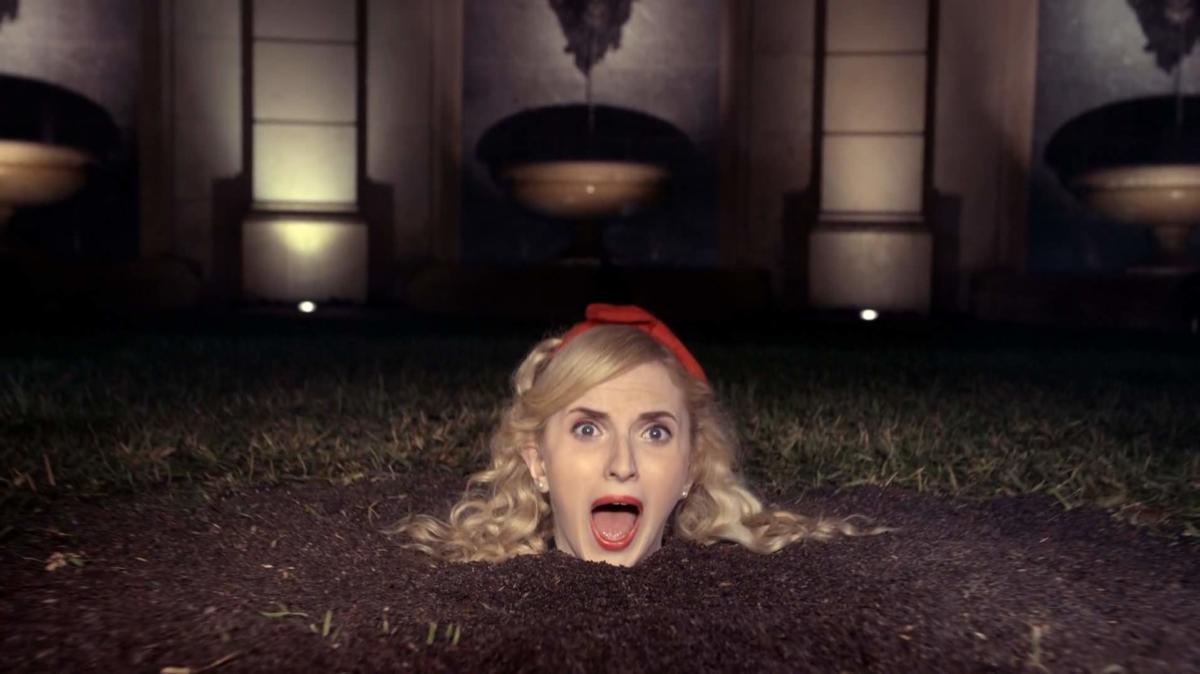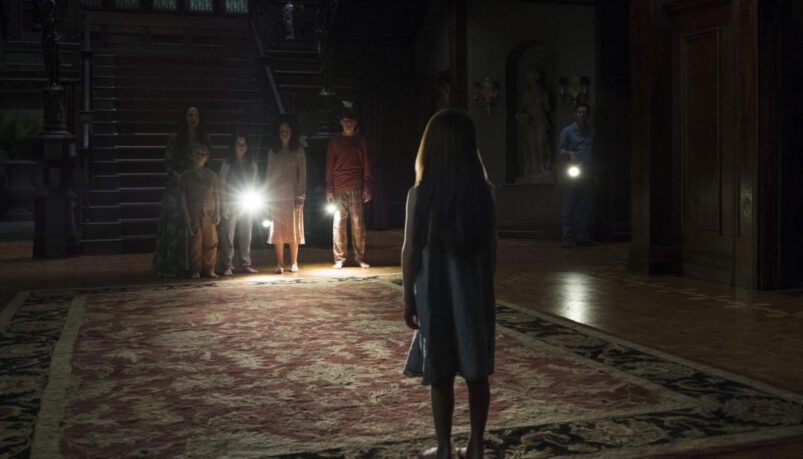Back in 2015, when there was apparently literally nothing good on the box, I started rewatching The X-Files, and it made me wonder whether serialised horror could ever be truly scary. Since then, it seems, both the horror genre and the availability of TV shows has exploded. Finding a series to watch has never been easier, and there truly is something to satisfy all tastes.
The subjective nature of what makes something frightening, plus our seemingly insatiable appetite for things that go bump in the night, means that script writers are pulling out all the stops to try and find an original take. Here I’m going to go over some of the examples of the genre that have been tried out in recent years, some successful, others…not so much.
1. Choose a monster and stick to it

It would be tempting to think that more monsters = more scares, so it takes guts to choose one creature to power a whole series. The Walking Dead and True Blood may well have revitalised the zombie and vampire genres respectively, and, yes, were able to deliver big on drama and production, but ultimately had little in the way of proper scares.
Charlie Brooker’s Dead Set (which, joyfully, is now on Netflix) works better with its super-fast, super-aggressive athletighouls. Like his other series, Black Mirror, he takes a central concept – what would happen to the contestants on Big Brother if a zombie apocalypse broke out on the outside? – and stretches it almost to breaking point. At a slim 8 episodes long, the plotline races along and these essentially 2D characters don’t have to be relied upon over multiple seasons.
2. Pick an interesting time or location

Horror films have long used non-linear time frames and unfamiliar surroundings to lend a sense of unease, and this works exceptionally well in a TV series as well. Use of flashbacks, unreliable narratives and out-of-place technology over multiple episodes can build up to give an underlying feeling of dread that you can’t quite put your finger on.
2014’s Penny Dreadful trawled classic literature to give us a new take on old monsters, and its smokey Victorian London had a slick, sensory-depriving feel to it. In contrast, this year’s The Terror had us shivering in the frozen wastelands of the Arctic ocean, and with a timeframe leaping all over the place, plus an unreliable sense of reality, it was easy to be sucked into the claustrophobic fear the characters were experiencing. Both shows had a substantial budget, but by mixing up the bleak landscape with truly shocking moments of violence, The Terror made much better use of it.
3. Go heavy on the gore… and the laughs

OK, OK, its not really scary, but schlock horror can still be deliciously satisfying. With a virtually unlimited list of tropes and cliches, its easy for horror to become seriously heavy- going, and that’s not everyones cup of tea. Its genuinely refreshing to see that shows are listening to its viewers, and delivering something that’s both entertaining, and able to make you jump every so often. A
sh vs Evil Dead has sadly not been renewed for a 4th season, but it was still hugely successful, with Bruce Campbell having the time of his life reprising his titular role. And Brad Falchuk and Ryan Murphy created some sorority-schlock-horror magic with their 2015 hit Scream Queens. This show was so much more than the sum of its parts, combining razor- sharp dialogue with nods to 90’s teen films such as Scream and I Know What You Did last Summer. The end result was an original horror show that was a genuine joy to watch.
4. Be a creepy psychological thriller
https://www.youtube.com/watch?v=G9OzG53VwIk
This, I think, is where the true horror works in a TV show. Extended running times, with space to flesh out central characters, gives the perfect opportunity to ramp up tensions to unbearable levels. Take Castle Rock, with its goldmine of Stephen King material becoming beautifully intertwined, or The Returned, with its creeping sense of dread interspersed with shots of gorgeous scenery. These shows take their time, letting the characters develop and, crucially, allowing us to care about them. They rely on you making connections with the cast in a way that is often lost in films, so what they lose in pacing, they more than make up for in lasting horror at the events that unfold.
This is no more obvious than in the recent Haunting of Hill House, which is currently dividing audiences everywhere, and over which I have had multiple arguments on social media platforms. Yes, it has jump scares, but what really had me watching from between my fingers were the long, panning shots around the house and between characters, forcing me to search for shadows within shadows (for example, episode 6 has some veeeeery extended single takes, which almost had me screaming for some sudden movement to end the tension). The shows script writers know they cant rely on jump scares the whole time, so with some clever camera tricks and pretty effective media promotion- how many of us knew about the hidden ghosts until the articles started coming out?- they forced us to stare hard at the screen, making sure those scares hit right where they were supposed to.
5. Learn from the past… aka throw the kitchen sink at it

And if all else fails, why not just change things up every time? Somethings got to work if you throw literally everything you can think of at a show, right? And I can partly see their logic. Not only does it keep things novel, but it allows producers to try out new ideas and jettison the ones that don’t work. American Horror Story’s had some clunkers (looking at you, Roanoke), but it had the sense to ditch the meta, bring back some well- loved faces, and combine its strongest series’ to make a not-too-shabby Apocalypse. Likewise the underrated Channel Zero managed to create 3 completely different stories by trying out almost every trick in the book. Its not the most consistent, but by starting afresh every series they have managed to create some genuinely creepy moments that will burrow their way into your dreams.
So can horror TV shows really work? Well yes and no. I feel that the shows that have worked best are the slow- burning psychological thrillers rather than true out- and-out horror, and with that being so subjective, one mans change of trousers is another mans snooze-fest. But we are living in a golden age of television, and it seems like script writers and producers are falling over themselves to create a truly original take on TV shows across the board. I’m looking forward to turning out the lights, getting a cushion ready to hide behind, and seeing what more they have to offer.
Some of the coverage you find on Cultured Vultures contains affiliate links, which provide us with small commissions based on purchases made from visiting our site.

